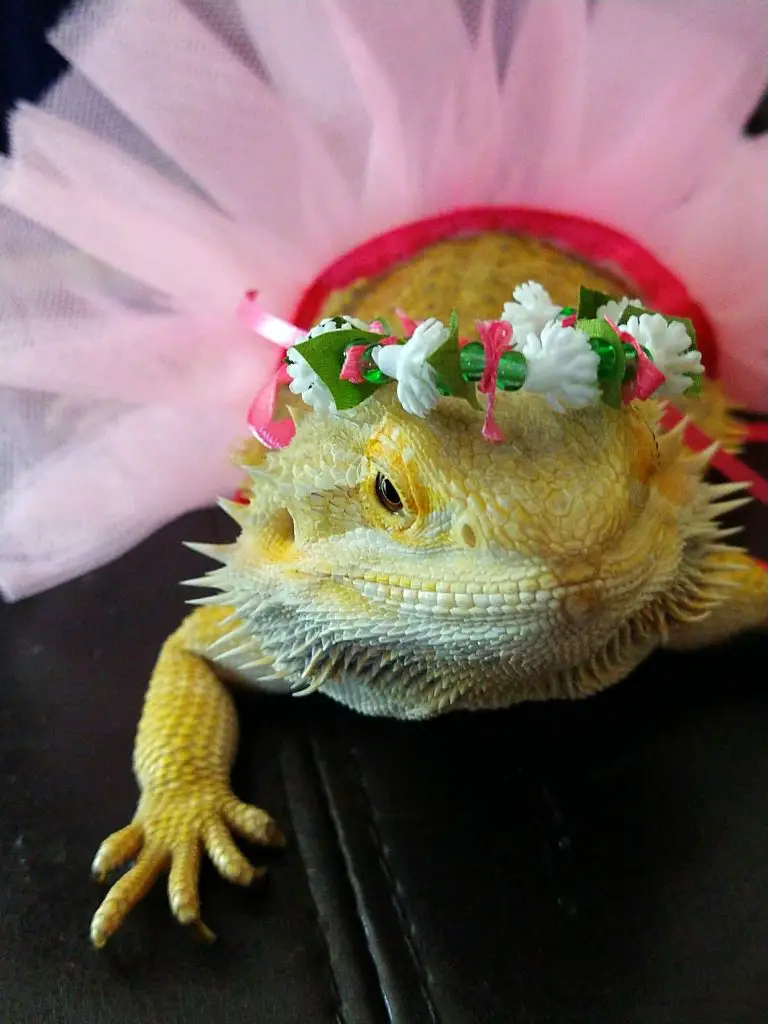Recently, I have been asked if bearded dragons have a third eye.
While many people do not believe that those dragons have another eyeball on their heads, that is still a fact.
Like some of my friends, when I heard the answer, I did not trust it.
I tried to find the eyeball on the beardie’s face. Unfortunately, that is not the place where the eyeball lies. So I could not find it the first time.
After many findings, I finally realized its area. It is not a redundant eyeball as most people think. In reality, it does have a lot of functions.
If you are also wondering where it is and what it is for, scroll down for the full detail!
Related Posts:
- Beardie vs. Chameleon: Facts and Differences
- Why Do Beardies Wave and Bob Their Heads?
- Fancy Beardie vs. Beardie: Which One Is the Best?
- How to Tell If Your Beardie Likes Music?
- Bearded Dragon Teeth Care: How to Care for Them
- 8+ Bearded Dragon Dying Signs You Need to Know
Do Bearded Dragons Have a Third Eye?
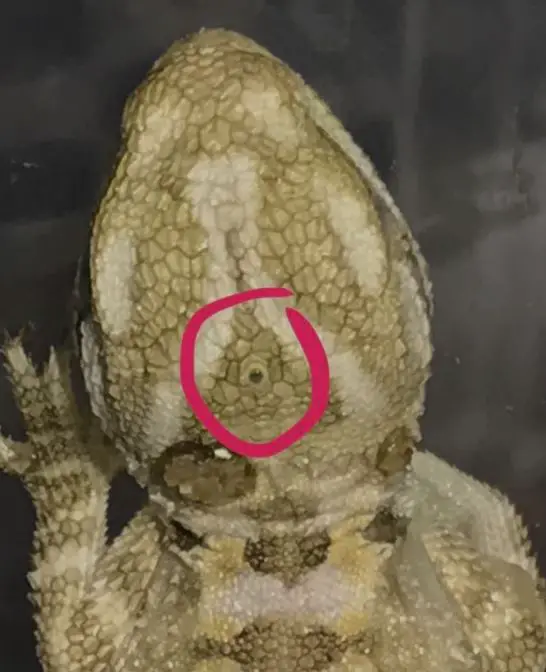
Any bearded dragon does have a third eyeball on top of his head. It is a small grey mark mostly to notice dangers. Besides, the small spot can realize temperature, humidity, and shadows. Plus, it carries out biological functions.
Also, to successfully protect the eye, you need to remember a little advice. Those are no direct light at night, a bright shelter, automatic lighting cycles, and changes between artificial and natural light.
Let’s take a look at this video to know where is the bearded dragon’s third eye:
Can a Bearded Dragon Third Eye See?
Although the third eyeball has many functions, it can not see like the other two ones.
To see images, an eye needs to have a particular part called the “iris.”
Unfortunately, the eyeball on top of beardie’s head lacks the segment.
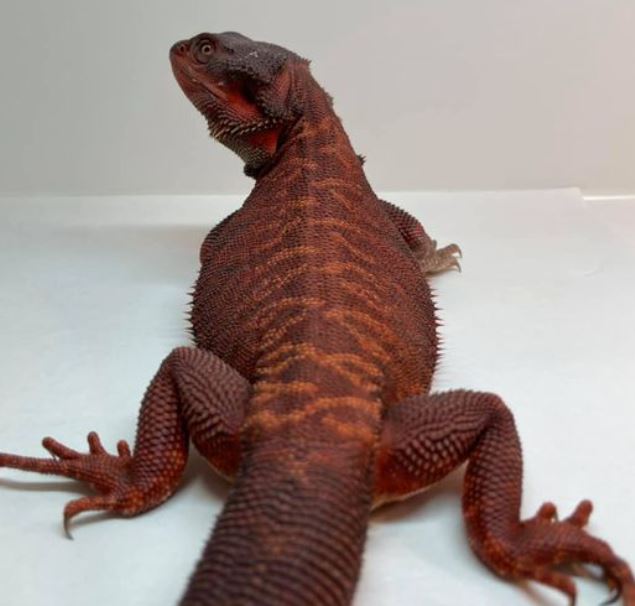
Furthermore, even though the organ had the “iris,” it still could not transfer the image to the brain. That results from lacking its connection to the average eye nerves.
Besides, the lack also leads to the beardie’s inability to realize the right image of the above objects. That being said, when something comes near his head, he can not recognize that those are dangers or his friend.
Also, he could distinguish neither the UV light nor the sun.
Do All Kinds of Bearded Dragons Have a Third Eye?
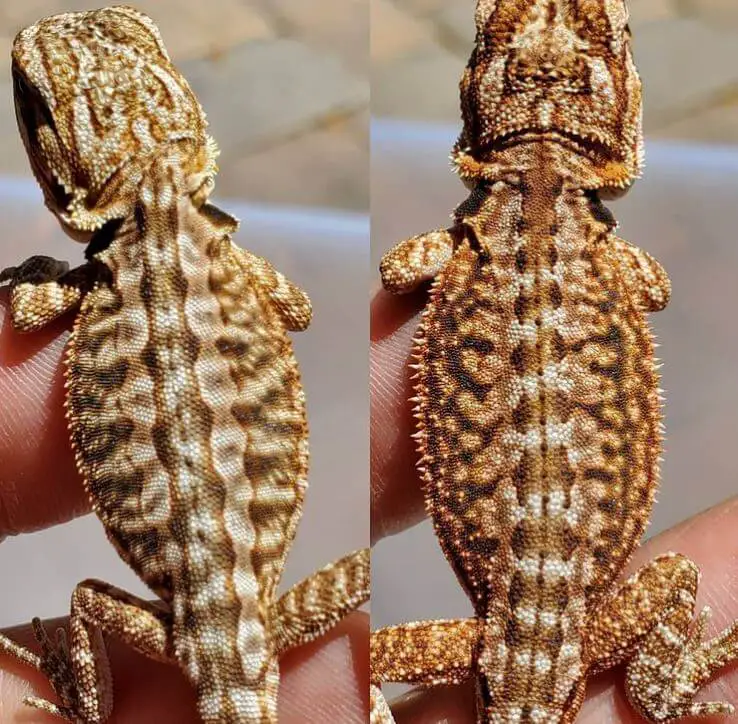
You can see the third eyeball in any bearded dragon. More than that, almost all cold-blooded animals have the eye. That might result from the natural selection test.
Because those animals with another eye survive better in the natural environment, they gradually become dominant.
However, there are still some exceptions, such as the crocodile. Their ancestry has a closer connection with birds. And they share some habits with warm-blooded animals.
Concerning the bearded dragon, his third eyeball often is a grey spot on the head’s top. If it does not have a grey hue, it always has a different color from the surrounding parts, helping you notice quickly.
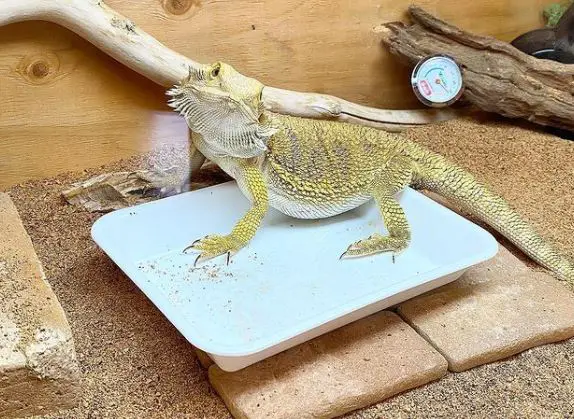
When comparing the feature with humans, you might also be surprised. Following some studies, we still have a similar lobe of the brain and the gland as a bearded dragon.
The gland produces a particular kind of substance to operate the sleep cycle. Plus, the sensory information comes to the brain via the lobe.
So, although we do not have a third eye, our body structure is still similar to the bearded dragon in some cases.
What Is the Purpose of a Bearded Dragon’s Third Eye?
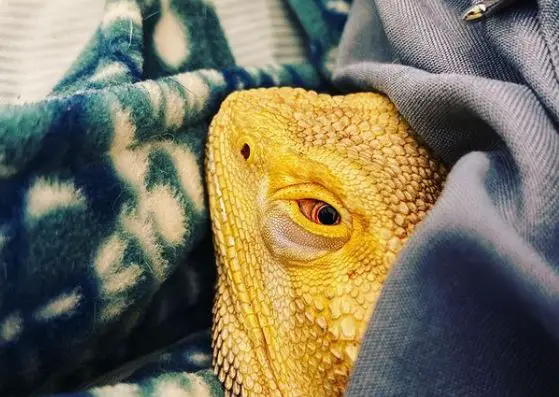
There are a lot of discussions and ideas about the strange third eye’s function.
Some even compared it to the Third-Eye God in Chinese stories. Then, they concluded that it could see special items and protect the pet alike.
Although I could not agree with the unrealistic ideas, the beardie’s third eyeball does have remarkable tasks, including:
1. Biological Function
First, the bearded dragon’s organ performs the function of regulating the body’s heat and hormone production.
The eyeball connects with a tiny brain’s part called the “pineal body.” They connect via a part of the brain called the eye center. They are parts of the pineal complex, a photosensitive system.
The pineal body is responsible for storing specific hormones such as melatonin to adjust the wake and sleep cycle.
Besides, the pineal complex can detach the time of the day. Then, it adjusts the internal clock to produce a suitable amount of hormones.
For those reasons, the third eyeball is a crucial part of helping bearded dragons regulate hormone production and the body’s temperature. Consequently, he can fit the outside environment.
Moreover, the bearded dragon’s part can convert light information to its brain. As a result, the brain understands how much light is needed. And they limit the redundant metabolic activity.
2. A Compass
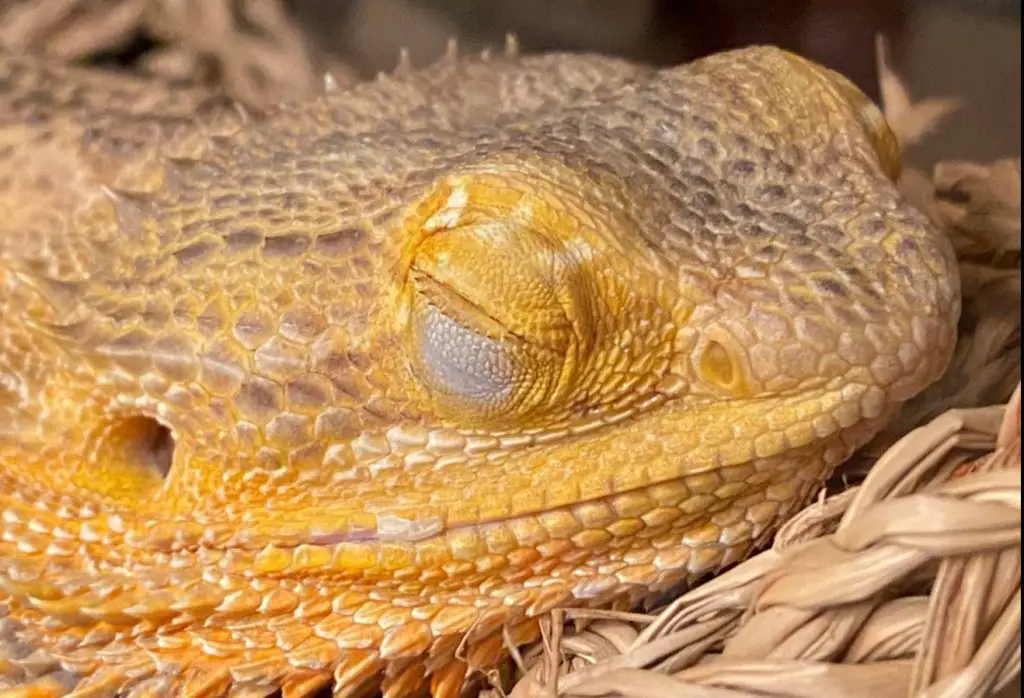
Secondly, those bearded dragons have a third eye to find their territory.
Like a compass or the third eyeball of the Second Wolf God in the Sun Wukong story, the bearded dragon’s eyeball can see extraordinary things. In this case, that is their home.
To explain this particular phenomenon, some scientists tested the animals’ eyes by putting them in different light conditions.
First, they taught them to swim through a pool without covering the sunlight.
Next, the beardies were divided into two groups.
One was placed in a closed room with a light similar to the outside condition. Another group was in a room where the light was different from the ordinary night and day cycle.
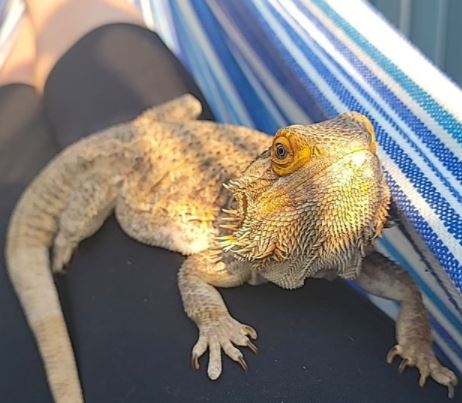
After around a week, those groups came back to the pool again. The result is clear: The first group could swim well. By contrast, the second one could not.
The study proved that the hole uses the sunlight, or the sun’s position, to navigate the beardies’ house.
If you want to check by yourself, cover the eyeball and move them to a place far from the house. No matter how they try or how you guide them, they can not reach the original place.
By contrast, even when you move them to Mars, they can still return to their territory.
3. Notice Dangers
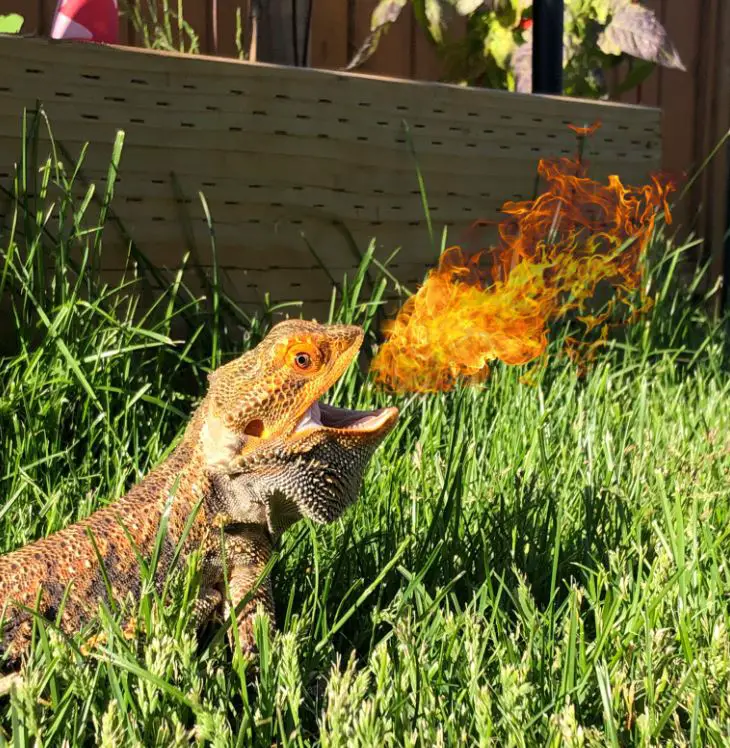
In the wild, a bearded dragon used to be the usual prey of birds or flying predators.
However, some mutations had appeared with the third eyeball developing to realize the light and shadows. They grew increasingly.
Nowadays, most beardies can realize the predators when they arrive from above. That comes to the useful function of the third eye.
However, the bearded dragon can not know exactly which predator or something is above. Therefore, even if that is his owner, he likely runs
Over time, when you teach him, he will gradually become familiar with you.
With a wild bearded dragon, you even can not see his silhouette once you come near them.
How to Protect Bearded Dragons’ Third Eye?
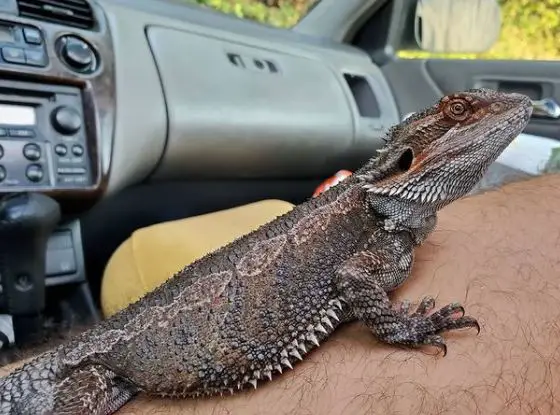
You have already known the critical task of the other eye. You might want to protect the part carefully. Below are some principles you must remember:
1. No Direct Light at Night
As I have just mentioned on the compass function part, the light condition considerably affects the photosensor part.
If you add any redundant light for the pet at night, he might feel annoyed. Plus, he can not sleep well.
It is ultra red or ultraviolet light, white or red light. The small third eyeball can still detach.
Therefore, adjusting the suitable light is essential. In the morning, you can expose him to the bright white light.
Keep in mind to keep the heat source far away from the pet. Around six to 12 inches are ideal.
What’s more, each beardie has a unique internal system. Notice the light photoperiod to protect the organ ultimately.
2. Natural Light in the Daytime
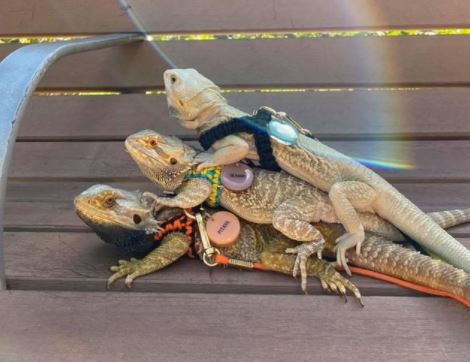
Not only the night but the daytime’s light level is also essential. When a bearded dragon does not sense the suitable amount of light in days, he would eventually not be able to distinguish the time.
Like human beings, that would eventually lead to tiresome and some health problems.
You can let your pet bask at times. Moreover, keep the enclosure light running stably for the best result.
3. Automatic Lighting Cycles
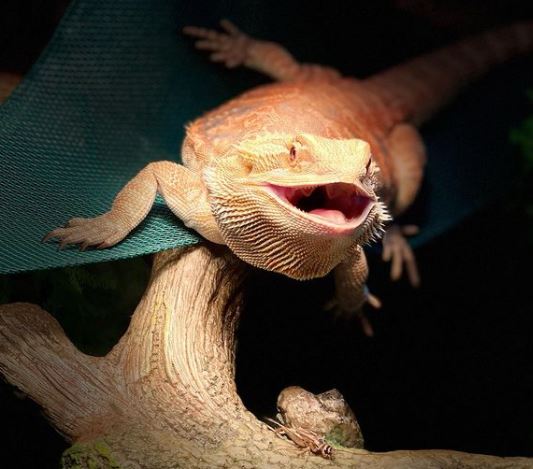
Instead of adjusting the light by yourself, you can consider paying for a timer to make consistent and automatic lighting cycles.
Familiar with the natural environment, the device can ensure the beardie’s remarkable eyeball works well.
There are some well-known timers you can invest in.
For instance, the Zilla Power Center Digital Timer, a BN-Link Heavy Duty Digital Timer, or a Zoo Med Timer are my recommendations.
4. Artificial and Natural Light
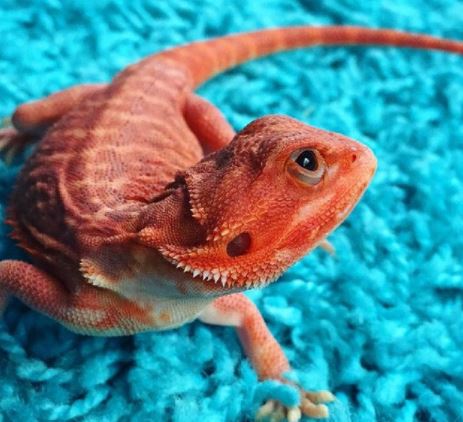
Because of the importance of light with beardies, some owners expose them to direct sunlight too often.
That might not be a good decision. You have to notice your pet’s reaction to frequent exposure. They might show negative behaviors such as escaping.
Then, quickly take them into the cage. That may result from the third eye. For some, the organ can not get used to a long and natural brightness.
Does a Bearded Dragon’s Third Eye Have an Eyelid?
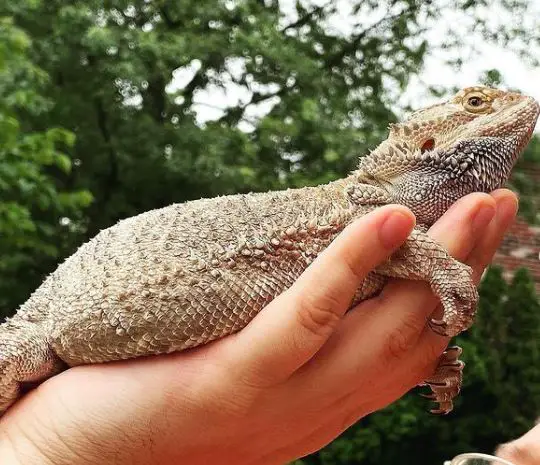
While transparent beardies possess a third eyeball, some still wonder if they have the eyelid on the organ.
My answer is no. There is only a transparent scale covering the eyeball to protect it from the outside environment. No specific membrane lies under the eyeball to keep them moist.
However, the precise scale still works well. It can prevent the bearded dragons from being hurt by any strange objects such as sand or dust.
Besides, there’s no need to worry when sometimes you want to touch the eyeball or incidentally graze the organ.
But, like normal eyes, the part is also delicate.
Bear in mind to throw away any protruding object out of their cage. And do not touch the part often if you do not want your pet annoyed.
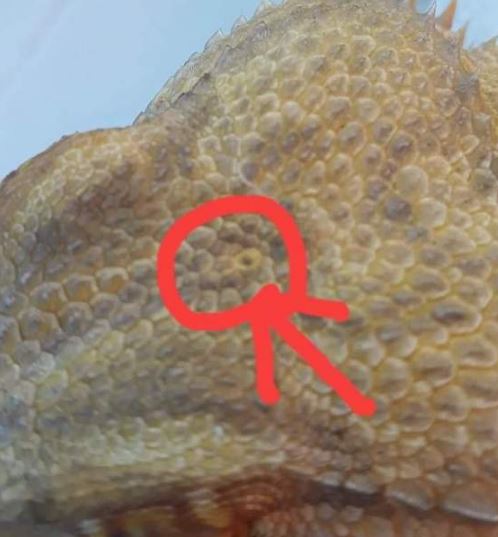
What Other Reptiles Have a Third Eye?
Out of the bearded dragons, some reptiles also feature the third eye. They are slowworms, monitor lizards, a few iguanas, and s kinks.
On those animals, a third eyeball works mainly for detecting the changes in seasons. Based on the look, they know if that is the day or the night. Then, they can understand if the night or day is longer.
Often, in summers and springs, the day is shorter than at night. The opposite is in winter and autumn.
According to the information, the reptiles’ brains would know how to regulate other activities.
Frequently Asked Questions About Bearded Dragons’ Third Eye
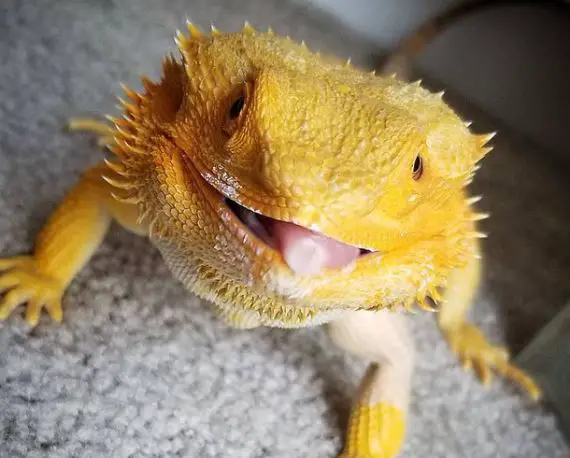
1. Why Does My Bearded Dragon Close One Eye?
Once beardies close one eye, they might have rooted from parasites, infections, or stimuli response.
Besides, difficulty in shedding or dehydration also forces them to complete a single eyeball.
In some cases, I also notice they only open one of the orbs when the light and humidity are abnormal. Plus, the eyeball might be attacked.
2. Can a Bearded Dragon See via the Third Eye?
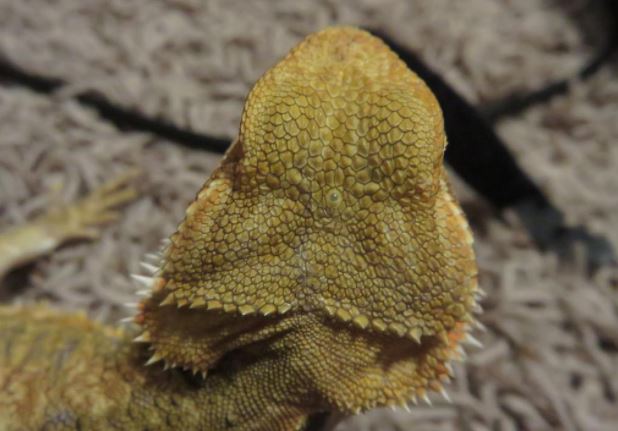
As I have just mentioned, a bearded dragon’s third eyeball can not see any item.
Alternatively, the organ can notice the change in light and shadow.
That means beardies can realize if there are strange features such as predators coming from above.
Moreover, the eyeball works as a compass. It also carries out particular biological functions.
3. Where Is a Bearded Dragon’s Third Eye?
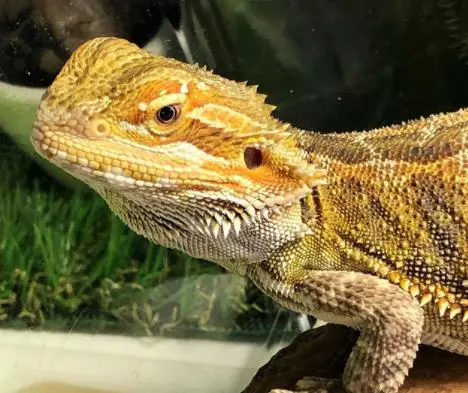
You can notice the eyeball as a grey dot lying on top of his head, between two usual eyes.
Following the anatomical language, it is between the frontal bone and the prefrontal, connecting with the specific gland. It is different from normal eyes because it lacks the “iris” segment.
4. What Animals Have a Third Eye?
The third eyeball is a symbolic definition at times.
Instead, you can call it an eye on the head’s top. The particular organ can appear in some species of sharks, frogs, bony fish, and lizards.
Conclusion
To sum up, above are some main pieces of knowledge related to the question of whether bearded dragons have a third eye.
In a nutshell, the reptile does possess a third eye. Lying on the head’s top, it fulfills special biological functions. Additionally, beardies use it to notice threats and navigate their territories.
We hope the information has helped you have a deeper insight into your pet at best!
Key points about bearded dragons and their third eye!
Bearded dragons, those charming reptiles known for their distinctive appearance, have a unique feature called the “parietal eye,” often referred to as the “third eye.” This eye is a fascinating adaptation that serves several functions. Here’s what you need to know about the bearded dragon’s third eye:
1. Location:
- The parietal eye is located on the top of the bearded dragon’s head, between its two regular eyes.
- It appears as a small, clear, and dome-like structure.
2. Purpose:
- While not a true eye in the conventional sense, the parietal eye is photosensitive, meaning it can detect light and dark.
- It’s primarily responsible for detecting changes in light intensity and helps the bearded dragon adjust to its environment.
3. Circadian Rhythms:
- The third eye plays a crucial role in regulating the bearded dragon’s circadian rhythms.
- It helps them recognize day and night cycles, which can influence their behavior, activity levels, and hormone production.
4. Protection:
- The parietal eye serves as a protective mechanism to help detect aerial predators, such as birds of prey.
- When it detects shadows or movements from above, the bearded dragon may become alert and seek shelter.
5. Eye Structure:
- This eye is equipped with a lens, a retina, and a cornea but lacks a full set of eye muscles.
- It cannot form detailed images or focus like the bearded dragon’s primary eyes.
6. Behavior:
- Bearded dragons may exhibit head bobbing or tilting behavior as they attempt to align their parietal eye with the light source.
- This behavior is part of their visual adaptation to optimize light detection.
7. Absence in Some Species:
- While common in most bearded dragon species, not all of them have a well-developed parietal eye.
- Some species or individuals may have a vestigial or less functional third eye.
8. Shedding Pattern:
- The third eye has a unique shedding pattern compared to the other two eyes.
- It usually sheds less frequently than the primary eyes.
In summary, bearded dragons possess a fascinating parietal eye, also known as the third eye, located on top of their heads. While this eye can’t provide detailed vision, it plays a crucial role in regulating their circadian rhythms, detecting changes in light, and serving as a defense mechanism against potential aerial threats. Understanding the function and significance of this unique adaptation can help you better appreciate the complex nature of these captivating reptiles.
Further Reading:
- Carolina Custom Cages Terrarium Review
- 8 Best Basking Rocks for Beardie: What Is the Best Choice?
- 10 Best Thermometers for Beardie: How to Choose the Best One?
- 5 Best Beardie Lighting Setups for Beardie Lovers
- 9 Best Heat Lamps for Beardie: Natural Habitat Provided

